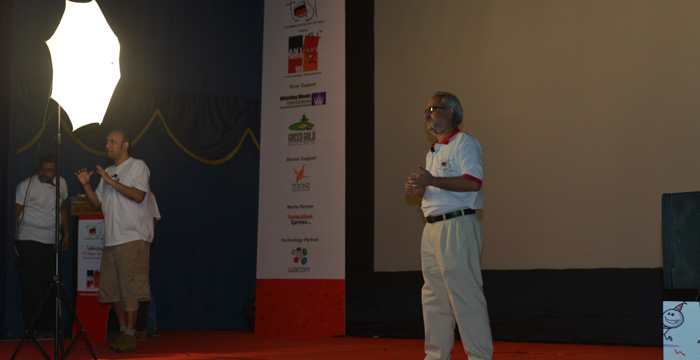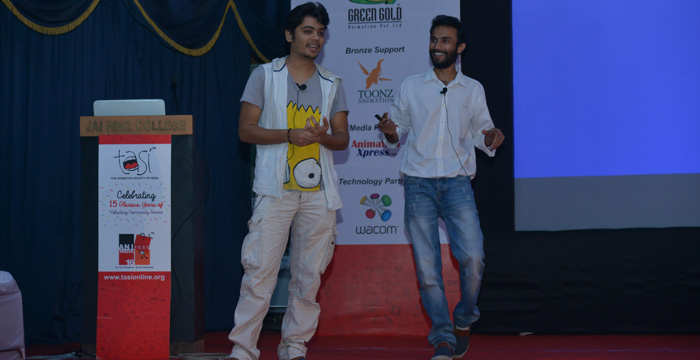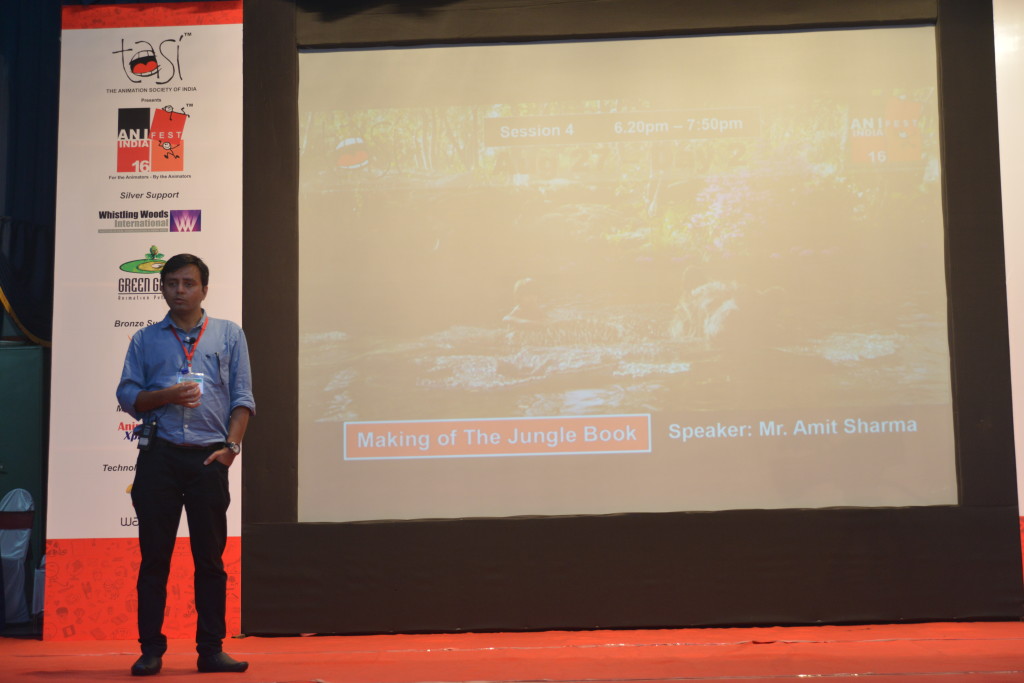Continuing its yearly tradition of imparting knowledge to the young aspiring artists of tomorrow, TASI’s (The Animation Society of India) Anifest India 2016 kicked off its three day long event yesterday by showcasing Laika’s recent release Kubo and the Two Strings for the first time in India, and the response which came post it was something that keeps the adrenaline pumping in the hearts of the event organisers. The Day 2 of Anifest portrayed what it truly stands for, an event ‘For the Animators. By the Animators’.
The Jai Hind College auditorium was filled with inquisitive students yearning for information which was going to be disseminated by the industry professionals the entire day. The Day 2 of Anifest was lined up with four sessions; Interactive Light Animation Workshop, Blender and it’s potential, Photogrammetry 3D Scanning and its application in the Film and Gaming Industry and Behind the Scenes of ‘The Jungle Book’. Due to some unavoidable circumstances the Photogrammetry 3D Scanning session had to be pulled down, nonetheless the remaining three sessions were worth the time.

There are various techniques of animation that are at disposal to an animator enabling him to convey his/her story in the way he/she wants. These include traditional hand drawn animation, claymation, sand animation, digital 2D/3D animation, stop motion animation, so on and so forth. However, there’s one form of animation which lets us manipulate and play with light. Though not a widely used form of animation in India due to various reasons, light animation has its own distinctive style attached to it, and educating more about it were Vaibhav Studios, founder, Vaibhav Kumaresh and Ranjit ‘Tony’ Singh.
The session started off by them describing what ‘light animation’ is all about and later a live demonstration was made with the help of two sporting participants – Nikhil and Jharna. Light animation is nothing but basically series of images being painted with the help of light. Some of you might be well versed or might be having a fair idea of light photography. Light animation is just an extension to that wherein short films or sequences are made by capturing images shot by shot, compiling them to form a beautiful animated short. In this technique, there are just two basic requirements to begin with; a camera whose shutter mode can be manipulated with and torch. The trick to get the shot right is the co-ordination between the camera handler and the person who will be painting with canvas with the help of light, the timing of the shutter and the exposure. One thing that’s crucial while doing light animation is that the shoot should take place in a pitch dark environment; be it indoors or outdoors.
It’s the ‘imperfections which make the end product endearing’ over here. And to get that end product, one needs to plan out each and everything precisely. Right from detailed storyboard, animatics, breakdown of shots to whether one wants simple lateral movements of light or complicated, everything should be planned and tested many times before beginning with the actual production process. At the end of the session, post the question answer round, Kumaresh and Tony showcased the final output of the live demonstration, carried out on stage in that one hour with the help of young enthusiasts Nikhil and Jharna, leaving the audience awestruck.

A different world of software was introduced at the fest as the next presentation ‘Blend it with Blender’ widened the horizons of the audience. Weybec studio, co –founder, Pratik Solanki and technical director, Niyal Parmar introduced the software Blender to the young aspirants with all its features and user friendly interface.
“First of all, Blender is a free open source software which is easily accessible without any installation procedure. Secondly, it has a typical standard CG pipeline inclusive of modelling, texturing, lighting, editing, compositing and rendering,” encouraged Solanki. “You can even run it on a pendrive; there is no need to even install it,” added Parmar.
The duo highlighted the various aspects of Blender like its tools, new add-on’s and development incorporated through various versions. Also, the Blender community is quite well knit and ever ready to help the upcoming artists with all their queries. “If you are stuck anywhere while working on the software, you can write to the community and the artists will respond willingly,” assured Solanki.
The duo also showcased India’s first open source 3D animated film Monkaa along with other Blender worked films like Big Buck Bunny and Cosmos Loundromat. “Blender as a software should be learned along with the standard softwares like Maya or 3ds Max,” asserted the duo.

The Jungle Book film was created majorly in India. If some of us were not aware of this fact then MPC, head of compositing, Amit Sharma clearly explained the efforts of the Indian artists in his presentation which followed after the tea break. Sharma explained the creation of various primary characters like Bagheera, Baloo and Shere Khan and the diverse backgrounds and the whole idea of key frame animation.
“All the characters apart from Mowgli have been created using animation. In fact at some instances even Mowgli or parts of him were digitally doubled to suit the scene,” highlighted Sharma. Getting the most organic interaction of Mowgli with the digital animals, authentic forests backgrounds using number of references and creating a whole photorealistic feel was the constant challenge that Sharma and his team faced at MPC, Bangalore.
The second day of TASI’s Anifest 2016 concluded with a pool of knowledge to take back home. The fact that the Q&A time after the sessions were lengthy and full of fruitful questions by the audience portrayed the level of interest and served the purpose of the fest. We await in hunger for more knowledge, questions and answers for the third day of the fest tomorrow.
Click here to view the complete coverage of Anifest India 2016

